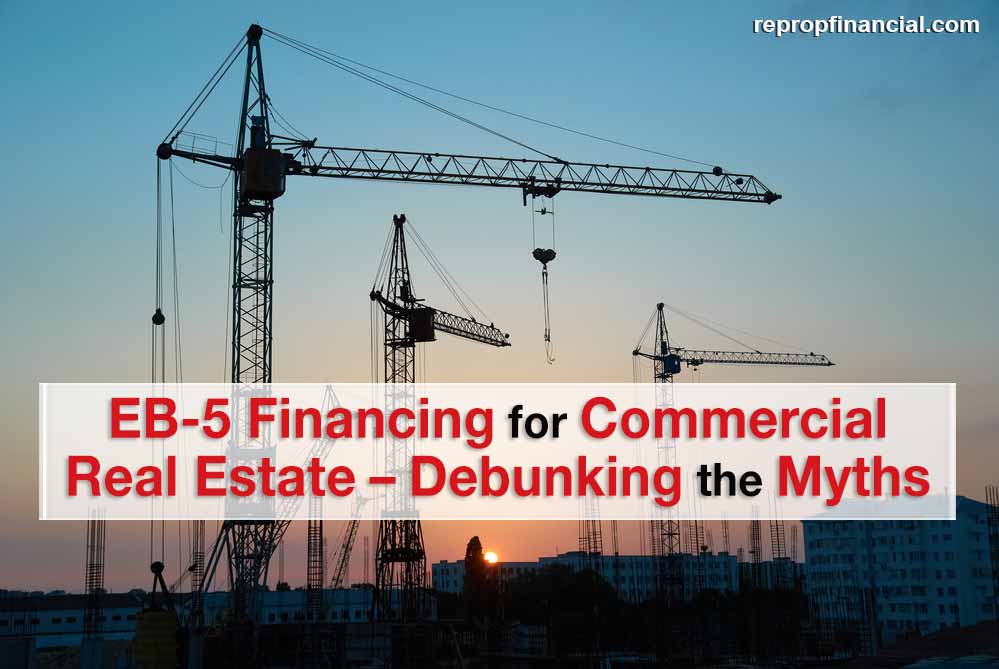Over time, the EB-5 commercial real estate financing program has become very popular with both investors and developers. However, it has also proved to be a highly misunderstood alternative financing option, particularly among most commercial real estate developers in the country. This commercial property financing program has been hit by negative publicity. This is largely attributable to a few high-profile fraudulent schemes. In reality, EB-5 is a very attractive commercial real estate development funding solution. This is especially so for those developers that are well-versed with all its complexities.
What is the EB-5 program?
The EB-5 program is an employment-oriented US visa program that enables foreign investors to obtain permanent residency. Typically, eligible investors are required to make an investment of between $500,000 to $1 million in new commercial enterprises, which can create no less than 10 full-time jobs. While this alternative lender program was first established in the early 1990s, it remained obscure until the 2008 financial crisis.

The economic recovery that followed brought this commercial real estate construction mortgage program to prominence. In particular, a new rule was forwarded that made the construction jobs created by EB-5 financed commercial real estate projects sufficient to fulfill the program’s job creation clause.
This decision made this new construction funding program to be a highly viable solution for many commercial real estate developers in the nation. Currently, commercial real estate development projects account for the largest share of all EB-5 financing. Foreign investors strongly prefer to fund commercial real estate projects in the US for a number of reasons. This includes the transparency and consistently huge demand in the market and the expectation that their investments are effectively secured by tangible assets. In this way, the EB-5 program has proven to be a uniquely risk-averse solution that tends to gravitate to be one of the safest commercial real estate funding options with the highest probability of successful completion. Let us now take a closer look at some of the most common misconceptions of the EB-5 building loans program.
Common misconceptions of the EB-5 commercial real estate funding program
Over the recent years, the EB-5 program has gained a lot of traction and even demand in the country. However, many US commercial real estate developers still have an incomplete perception of it. This type of alternative financing solution is very distinctive upon comparison with most traditional options and carries a specific set of pros and cons.

The EB-5 program is simply an immigration program
A big number of developers tend to focus more on the immigration aspect of the EB-5 program and fail to perceive the entire scope of this commercial real estate investment process. This program is regarded as a security and is also regulated as such. Besides its immigration angle, it is accompanied by complex financial features requiring specific financial preparation. It is always highly advisable to enlist the guidance of not only immigration lawyers, but also security lawyers to help you efficiently navigate the whole process.
The EB-5 program is “fast money”
Some developers erroneously think the EB-5 program delivers a fast means of securing commercial real estate funding when contrasted with most other lending solutions. In reality, EB-5 is “slow money” when it comes to both its disbursement and maturity time. This signifies it isn’t the ideal solution for all kinds of commercial real estate projects or even developers.

It is feasible to make use of EB-5 financing at the start of a commercial property development project. Doing so might unnecessarily make the project’s capital stack complicated. Oftentimes, such projects will necessitate bridge financing while the EB-5 money is being raised. The program usually stipulates that the money has to be first consolidated, processed, and ultimately disbursed. Developers tend to integrate EB-5 financing when construction has already begun. This way, the funding is primarily meant for refinancing more costly construction loans and partly replacing the developer’s equity with affordable, long-term financing. EB-5 funding traditionally has a 5-year investment timeline.
The EB-5 program is free money
The EB-5 program is one of the most affordable commercial real estate financing solutions in comparison to most traditional options currently made available in the market. Still, it is not free money as some developers tend to believe. There are a number of expenses to be footed because of its distinctive characteristics. While EB-5 mortgage rates are on the rise due to the program’s increased popularity, they will always remain beneath 10%.
This makes it a particularly attractive sort of alternative commercial real estate funding solution. When a developer uses EB-5, they can fix their interest rates during the funding period in order to hedge off inflation. Foreign authorities’ regulations and challenges with transferring money across borders often make the EB-5 process complex and increase the capital cost. This is especially so in nations that have put in place capital controls where foreign brokers are needed to move funds out. This is often a risky process that demands high transaction rates.
Reprop Financial is a leading alternative lender that primarily focuses on delivering competitive commercial real estate financing in the states of California, Oregon, Washington, Arizona, and Idaho.
Call us today to access a variety of personalized b2r finance real estate solutions.



